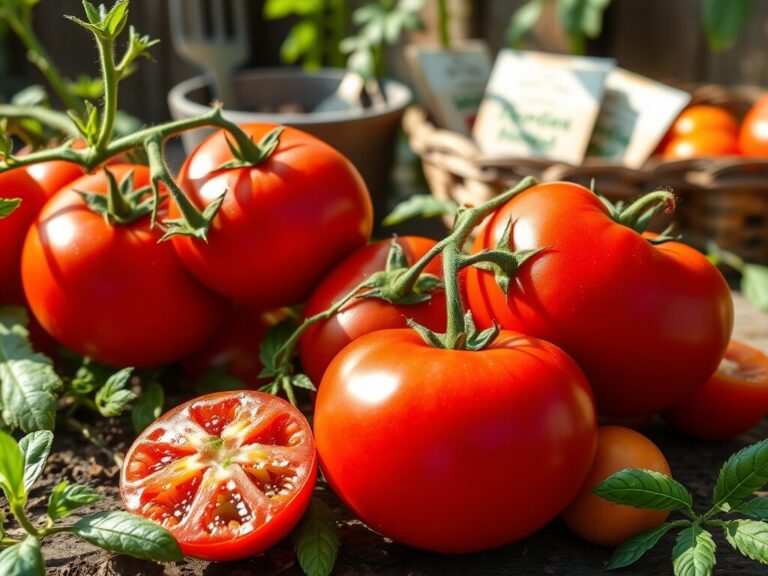Seed Starting Guide
As a dedicated homestead farmer, the journey from seed to harvest the very essence of your craft. Seed starting is the foundational step that ignites this cycle of growth, allowing you to nurture vibrant seedlings that will one day flourish in your bountiful fields. The art of seed starting requires a blend of knowledge, patience, and meticulous care—a harmonious dance between science and nature. In this comprehensive guide, I will take you through the intricate process of seed starting, you with the wisdom and techniques necessary to and set the stage for a harvest.
Seed Starting Essentials: Nurturing Life from the Ground Up
The Seed Starting Adventure: A Step-by-Step Odyssey:
Embarking on the journey of seed starting is akin to setting sail on a captivating odyssey, where each delicate seed holds the promise of future harvests. This adventure traverses the realms of patience, skill, and dedication, as you nurture life from the tiniest of beginnings.
1. Choosing Your Seeds:
The seed starting journey begins with the selection of high-quality seeds. Opt for reputable seed suppliers that offer a diverse range of open-pollinated and heirloom varieties, ensuring the genetic diversity and resilience of your future crops. Selecting seeds is the pivotal first step in your seed starting journey. Choose reputable suppliers offering diverse open-pollinated and heirloom varieties suited to your region. Opt for robust genetics, ensuring healthy and productive plants for your homestead garden.
2. Gathering Supplies:
An organized setup minimizes stress and optimizes your seed starting efficiency. Preparation is key. Assemble your seed starting arsenal: seed trays, pots, labels, and a spray bottle. Invest in quality potting mix and a comfortable workspace. These supplies lay the foundation for successful seedling growth.
3. Selecting the Right Seed Starting Mix:
4. Sowing Seeds:
Sowing seeds is an art that demands precision and care. Follow the recommended depth and spacing guidelines on the seed packet. Sow with care. Follow packet instructions for depth and spacing, and use a dibber or pencil for precision. Gently cover seeds with the chosen mix, patting it down lightly. Maintain the right moisture level, crucial for germination success.
5. Providing Proper Light:
Light is essential for healthy seedling development. Maintain consistent light levels to prevent leggy growth and ensure sturdy seedlings. Light is life for seedlings. Position lights at the appropriate height to prevent leggy growth and promote sturdy, vigorous plants.
6. Temperature Management:
Different crops have varying temperature requirements for germination. Utilize a heat mat to create optimal conditions for germination, and adjust the temperature as the seedlings grow to prevent stretching. Maintain the right environment. Different crops have distinct temperature requirements for germination. Utilize a heat mat to create optimal conditions, kickstarting germination. Adjust the temperature as seedlings develop to prevent stretching and ensure robust growth.
7. Watering Wisely:
Maintain consistent moisture levels in the seed starting mix.Water is life for your seedlings. Employ a spray bottle for gentle misting, preventing disturbance to delicate seeds. Maintain consistent moisture, avoiding overwatering that leads to fungal issues. Water from the bottom to encourage strong root growth and minimize the risk of disease.
8. Transplanting Seedlings:
Once your seedlings develop their first true leaves and have sufficient size, they are ready for transplantation. Gently lift them from the seed tray, being careful not to damage the delicate roots, and transplant them into individual pots filled with a nutrient-rich potting mix. As seedlings thrive, they outgrow their pots. Gently lift and transplant them into individual containers filled with nutrient-rich potting mix. Carefully handle their delicate roots to avoid damage. This step ensures ample space for continued growth and supports healthy root development.
9. Hardening Off:
Gradually expose them to sunlight, wind, and fluctuating temperatures over a period of 7-10 days, gradually increasing their exposure time. Prepare seedlings for the transition outdoors. Gradually expose them to outdoor conditions over 7-10 days. Begin with a few hours of sheltered sunlight and progress to longer periods.


